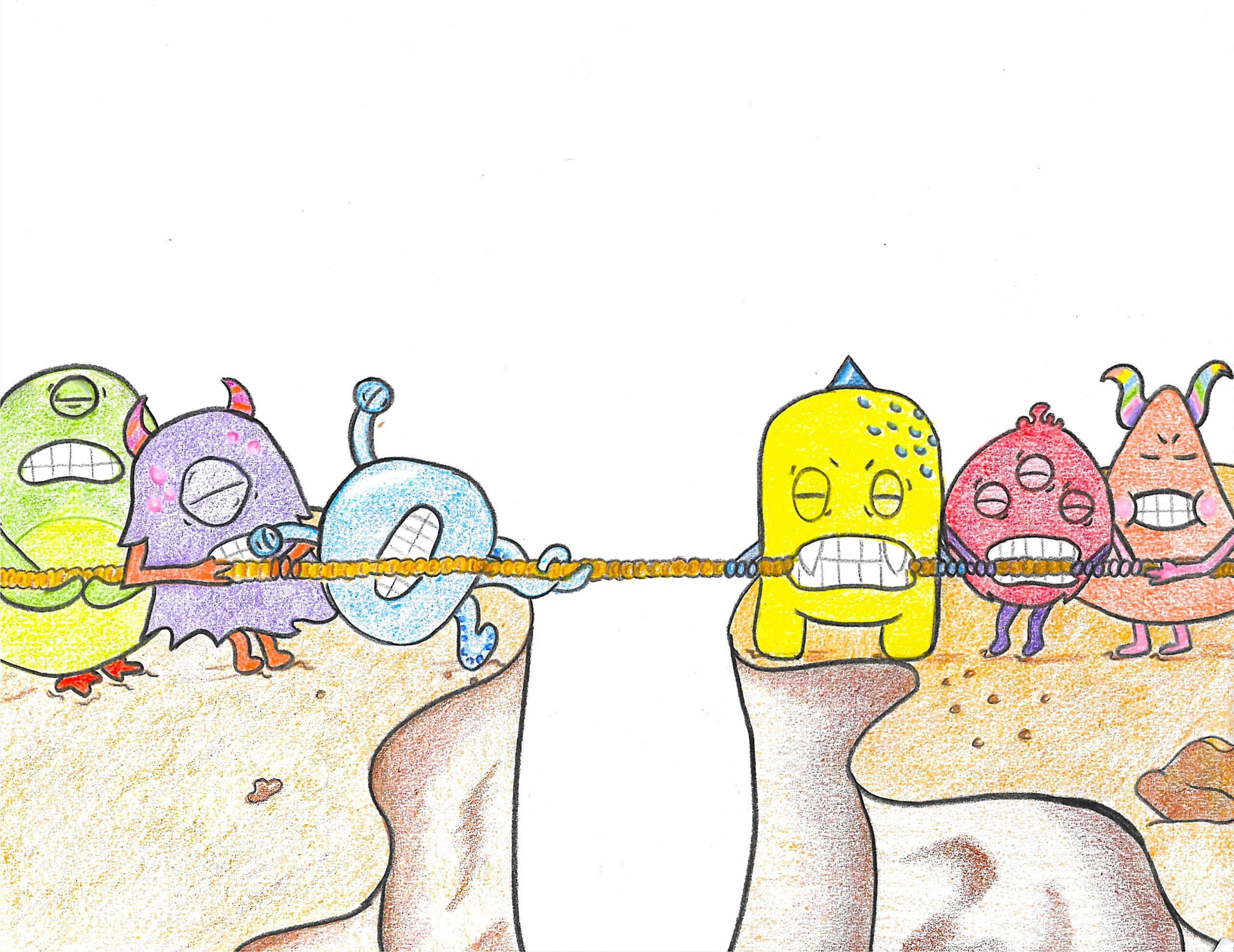Whether apparent or not, tension is the vehicle that pushes forward good fiction, and some of the most successful writers are those who have learned how to tease out tension, build it up, and release it at just the right time for reader satisfaction before teasing and building again.
If you want to write a novel that keeps readers hooked, imbuing your story with tension is a surefire way to grab onto your reader and not let go.

I recently finished reading The Night Strangers by Chris Bohjalian and found myself cramming in “just a couple more pages” when I really needed to put down the novel and switch to another task. You know, like showering, assessing manuscripts, and feeding my family.
Bohjalian is a master of literary tension, and he slides in would-be inocuous lines of text that encapsulate the mood of a scene up to that point in the story and force the reader (me, in this case) to end on a question-mark-less question. And because humans are so very human, many of us dislike unfinished business — clipped endings, lack of closure, not knowing.
In the prologue alone, Bohjalian sets up a plain basement door as something of an enemy that may or may not have malicious intent when he closes the opening scene with this line:
At the same time, few of the agents who brought flatlanders from Massachusetts, New York, and Pennsylvania to see the house ascribed its years on the market to the door in the basement or the thirty-nine carriage bolts that sealed it shut.
I became enraptured with this story from the get-go.
The number 39 is important to the hero, as we come to find out, who moves his family to New Hampshire from Pennsylvania. And in the paragraph just before the one quoted, readers learn that folks in town use the word “history” euphemistically.
I mean . . . what is behind that bolted-shut door?
Have you read The Night Strangers? If so, do you see geese differently? How about basement doors?
What is literary tension?
Tension is the threat of something happening, whether good or bad, and results from that feeling of anticipation the reader has before their questions are answered — or not.
The “something” threatened can be good or bad: The excitement of a blindfolded walk to an unknown destination on your birthday or the coiled angst you feel while awaiting the results of a diagnostic medical test can both charge the air with tension, invite momentum to live beneath the reader’s skin ready to unleash.
When you build tension in your story, you intentionally stress out your reader and can cause emotional and physical strain, as well as physiological effects like sweating and tachycardia. Sure, stress can frustrate, anger, even bewilder. But it can also challege, exhilarate, and inspire your reader.
Tension in literature keeps readers engaged because they are compelled to find out what happens next: Will she open the door? Will they break up? Did the world actually end? What’s in that envelope?!
Tension can be internal or external.
External tension comes from your hero’s main external conflict — their goals, their motivations, their hindrances, their enemies. If your main character is on an epic quest to bring a cursed object, finally, to its resting place before time runs out and the world becomes petrified for eternity, tension will be high as the reader waits to find out whether the hero will succeed and break the curse, or whether the hero will fail and be turned to stone.
Internal tension, however, comes from a flaw the hero must address through self-development related to their goals, motivations, hindrances, and enemies. Internal tension can feel just as powerful as external tension, if not more, by pulling the reader into the hero’s psyche, allowing the reader to feel the chasm between speech and action, between action and intention, between intention and speech.
Internal and external tension aren’t mutually exclusive. Your story can have both, and many stories do include both internal and external tension through the subtle acknowledgement that a hero’s internality affects their external perceptions and actions and vice-versa.
Build your story on a tension foundation.
Tension-building may very well be one of the items on which you focus revisions because, while drafting, you may be telling yourself the story and may not yet know where the tension truly lies for your characters. Before massaging your story to enhance the tension, make sure your characters are well-rounded people, that they are active, not passive, that they move the world, rather than being moved by the world.
Once your characters are fleshed out and you’re revising your story, here are three ways to tease and build tension:
Place
When writing your settings, your story’s places, remember that certain settings can take your hero out of their comfort zone. In The Night Strangers, the story’s hero uproots his family, taking them out of Philadelphia and bringing them to the quaint (fictional) town of Bethel, nestled in greenery and the silence of poor cell service, to renovate a fixer-upper. In the thriller, Girls Like Us by Cristina Alger, the setting is a remote island community, the kind of place where everyone knows everyone else’s business except when it comes to murder.
When using your settings to ratchet up the tension, remember that settings are characters, too. They have lives of their own, become characters in themselves, living from the first pages of a story, experiencing challenges and changes.
Think about how the setting relates to your hero and to the world: Why is this place personal? What is this place’s history?
Time
Ticking clocks are usually associated with thrillers for probably obvious reasons. The Cell, a movie directed by Tarsem Singh, comes to mind. If you’ve not seen the movie (one of my favorites; I have two copies), a child psychologist dons a sci-fi suit to enter the dream-mind of a comatose serial killer, searching for clues to find his missing victim before the clock literally runs out and sets in motion the mechanics that will result in her watery death.
When using time to ratchet up the tension, remember that time must mean something to your characters. They’re living in the world. They have agendas, schedules, and plans. Those plans gets mucked up when the clock begins to race.
Think about how time relates to your hero and to the world: Why does the character need to move fast? What happens if they don’t?
Irony
Readers sometimes have information your hero doesn’t or can’t have and you can use that dramatic irony to build tension for the reader while the character is encountering or discovering something unexpected. For example, your hero strolls into a pub for a bit of whiskey after a harrowing day at work. What your hero doesn’t know (and your readers do) is that a villain is waiting inside the pub to kill your hero.
When using irony to ratchet up the tension, consider the space between what your reader knows and what your characters know, how your characters will be affected by the thing readers see coming, regardless of how long the thing takes to arrive.
Think about how the irony gap relates to your hero and the world: What does your character not know that readers do? How is your character being hindered by this lack of knowledge?
TL;DR: Tension is the vehicle that drives your story.
Play with tension, build your skills by increasing and decreasing tension in a given scene depending on meaning or mood. But don’t forget the “play.”
When you have fun building tension, readers will have fun being driven by it and may come to depend on you when they crave that page-turner promising to keep them up at night.
Check out these related articles:
So, how do you build tension in your stories? Share, or leave a link to your tension-heavy story in the comments!
Happy writing!
<3 Fal
Prefer video?
Come hang with me on the MetaStellar channel:

Fallon Clark is a story development coach and editor with more than a decade of experience in communications, project management, writing, and editing. She provides story development and revision services to independent and hybrid publishers and authors spanning genres and styles. And in 2018, she had the joy of seeing Forever My Girl, one of her earliest book projects, on the big screen. Fallon’s writing has been published in Flash Fiction Magazine and The MicroZine. Find her online at FallonClarkBooks.Substack.com, or connect with her on LinkedIn or Substack.

